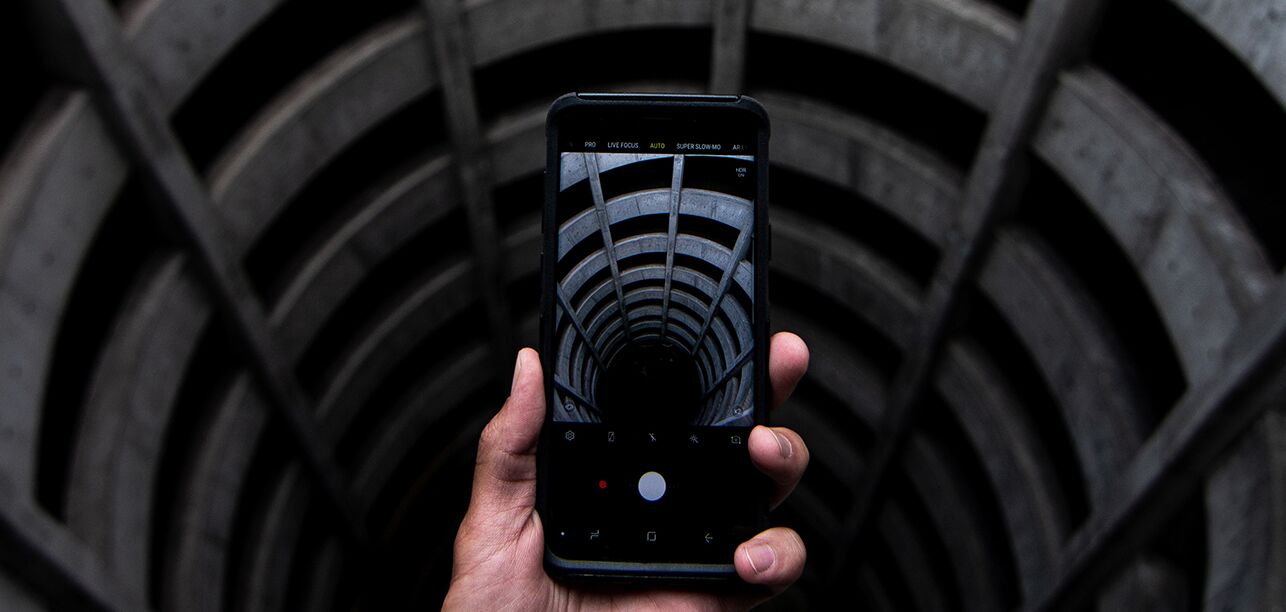Month: April 2018

Try as you might, there’s nothing you can do to completely protect against infrastructure failure.
Even the biggest fish in the sea suffer from unplanned disruptions. Remember when Amazon’s S3 had a massive outage in February 2017? To Amazon’s credit, they acted quickly and remediated the problem within hours, but more than 145,000 websites and 120,000 domains were impacted.
For IT professionals, outages like this are often top of mind when trying to pitch disaster recovery (DR) solutions to their boss and company executives. Professionals are often faced with two major hurdles: Some members of the C-suite only think about natural disasters and do not consider equipment failure, human error and cyber incidents. Plus, widespread outages caused by disasters are rare, so executives may doubt the need for a comprehensive DR strategy.
Here are three steps you can take to make a solid argument that a robust disaster recovery solution should be included in your IT budget.
Explain Exactly What Constitutes a Disaster
Mention the word “disaster” to your bosses and what’s the first thing that comes to mind?
Probably hurricanes, tornadoes, earthquakes and locusts (OK, maybe not the last one). And that would make sense. After all, the U.S. spent more on weather disasters in 2017 than any other year on record.
But it’s not just these large acts of God that can cause problems for your infrastructure. An electrical fire in two substations caused a power outage at Atlanta’s Hartsfield-Jackson International Airport in December 2017. The disruption forced airlines to cancel flights for days – Delta Air Lines reported losses up to $50 million.
It’s important that you emphasize that the term disaster can be used to describe anything from major weather events to technology failures and even cyber incidents. Explain how even minor incidents can cause major problems.
Explain Disruptions in Dollars and Cents
If you haven’t already gotten the attention of your executives by describing how disasters are more common than they think, hit them with information about how much these disruptions could cost your business.
Think worst case scenario. According to ITIC, 98 percent of organizations say a single hour of downtime costs their business more than $100,000. Even more staggering, nearly a third of organizations say this cost is more than a $1 million an hour. And this cost is just for the disruption itself. Point out the potential financial impact of customers who abandon your brand or negative publicity as a result of the public outages.
Provide Disaster Recovery Options
Now that you’ve pitched the doom and gloom scenario, come prepared to offer a solution – and most importantly, its cost.
When executives are budget planning, they aren’t going to just hand out a blank check to IT for resources when managers can’t provide specifics about how they will be used and why they will benefit the business. Consider your audience: You don’t need to provide extremely technical information, but you should be able to provide a high-end overview of the solutions you are proposing.
Examine your options for protecting your data during a disaster. Synchronous disaster recovery and data backups duplicate your critical information, so it remains accessible if your servers go down. Since this replication is done in near real-time, this is generally the most expensive option, but it provides the most comprehensive recovery solution. On the other hand, asynchronous solutions won’t be as pricey but have delayed duplication – anything from a few seconds to minutes. This means you will lose some of your data if your infrastructure goes down. Figure out if the additional cost is worth limiting the potential loss of data.
In addition, it’s important you consider the type of DR service that meets your specific business needs. Sure, you could build something yourself, but this might not be the most cost-effective option. A more reasonable option might be cloud-based disaster recovery as a service (DRaaS), which is run by a third-party provider, freeing up your IT staff to focus on core business needs. Each vendor will price this solution differently based on your specific service and functionality, so do your homework.
Explore HorizonIQ
Bare Metal
LEARN MORE
Stay Connected

What is the GDPR and How Do I Ensure My Business is Compliant?
The General Protection Data Regulation (GDPR) is a new European privacy law that goes into effect on May 25, 2018. It replaces the existing EU Data Protection Directive, also known as Directive 95/46/EC, and integrates data protection laws from across the European Union by applying a single, binding data protection law for all member states.
The new regulation represents a significant expansion of the existing directive. The changes were designed to strengthen individual rights around the consent of submitting personal data, as well as individuals’ ability to control their data after submission. This includes a section on data erasure called the “Right to be Forgotten.”
GDPR also spells out new policies and procedures for Controllers and Processors of EU data subjects. In that vein, here are some important questions that will help you determine the law’s applicability to your business, some tips for gaining compliance, and a look at how HorizonIQ is approaching the sweeping new regulation. If you want to delve further, take a look at GDPR at the official website.
How do I know if GDPR will apply to me?
If you’re wondering why there seems to be so much coverage of GDPR in U.S. media, here’s the reason: The regulation applies not just to EU entities or those with operations in the EU, but to all organizations that hold or process an EU citizen’s personal data.
In light of that critical point, ask yourself these questions:
- Does my organization process, transmit, store EU client data?
- What type of personal data does my organization collect/store?
- Does my organization ensure it does not hold such data longer than is necessary?
- Does my organization keep such data safe and secure, using a level of security appropriate to the risk?
- Is encryption necessary to protect the data stored by my organization?
- Does my organization limit access to ensure such data is only being used for its intended purpose?
- Does my organization transfer such data outside the EU, and if so, does my organization have the necessary technologies and processes in place to protect such data?
If GDPR applies to me, what can I do to become compliant under the new law?
The following tips can be used as a guide to comply with GDPR. These recommendations should in no way be considered legal advice. If GDPR applies to your organization, you should consult with an attorney to guide you through the many complexities of the regulation and its applicability to your use case.
1. Understand the law – Know your obligations as it relates to collecting, processing, and storing data, including the law’s many special categories.
2. Create a roadmap – Perform data discovery and document everything – research, findings, decisions, actions and the risks to data.
3. Know which data is regulated – First, determine if data falls under a GDPR special category. Then, classify who has access to different types of data, who shares the data, and what applications process that data.
4. Begin with critical data and procedures – Assess the risks to all private data, and review policies and procedures. Apply security measures to production data, and then extend those measures to backups and other repositories.
5. Assess and document other risks – Investigate any other risks to data not included in previous assessments.
HorizonIQ’s Commitment to GDPR Compliance
The security of our global infrastructure is HorizonIQ’s number one priority. Since the law’s passage in 2016, our security and compliance team has been diligently preparing for implementation.
In addition to a thorough review and update to our customer privacy and security policies, HorizonIQ maintains EU-US Privacy Shield Compliance, enters into data processing agreements with its customers if GDPR applies to the processing of their data, and enters into sub-processing agreements with vendors when necessary. We’re also committed to offering first-rate, best-practice security services across all of our products.
For a full breakdown of our processing roles and responsibilities, as well as our commitment to customers as a data controller, please visit our GDPR page.
Updated: January 2019
Explore HorizonIQ
Bare Metal
LEARN MORE
Stay Connected

7 Incredible Examples of Augmented Reality Technology
Remember Google Glass?
The much-hyped augmented reality product from the search engine company promised to revolutionize the way we interacted with the world. It didn’t quite pan out.
While most of the tech world labeled Google Glass a magnificent failure, the underlying technology highlighted the enormous potential of augmented reality.
What is Augmented Reality?
This technology superimposes a CG image on a user’s view of the real world. Unlike virtual reality, where everything a user sees is generated by a computer, augmented reality keeps the real-world focus, but just adds elements that aren’t really there to enhance the user’s experience.
This application has been used everywhere from the healthcare tech industry to retail and even manufacturing—Google is reintroducing Google Glass as an augmented reality tool for the workforce.
A few innovative professionals are now even using augmented reality in their business cards.
#AugmentedReality business card using #ArgonJS. @MikeQuindazzi Hashtags #ar #vr #smartphones #mobileapps #iot Link https://t.co/W0V7JPq4dm pic.twitter.com/YD51O9UUvf
— Mike Quindazzi ✨ (@MikeQuindazzi) April 12, 2018
Pretty cool, right?
Best Current Examples of Augmented Reality
The potential of augmented reality is endless.
It’s only a matter of time before this technology becomes a part of our everyday lives. We’re not quite there yet, but a few companies and organizations are making great strides with this technology today.
Here are seven of the best examples of augmented reality technology we’ve seen to date.
IKEA Mobile App
Aside from furniture with fun names that you need to assemble yourself and cheap Swedish meatballs, IKEA is also known in the tech world as one of the first companies to use augmented reality well.
The retailer began experimenting with augmented reality back in 2012, when shoppers could use the app to see how tables and shelves would look in various places around your house. IKEA is taking it a step further with its IKEA Place app, which now allows you select anything from the store’s catalog and see how it will look to scale anywhere in your house.
This is an extremely helpful tool for people who are wondering if a certain piece of furniture will fit in a tight space, or if the color of their prospective purchase will match the motif of the room.
Nintendo’s Pokémon Go App
You really can’t have an augmented reality conversation without mentioning Nintendo’s Pokémon Go app.
The smash hit of 2016, Pokémon Go allowed users to catch their favorite Pokémon by looking through their phones at the real world – but with superimposed images.
The game was an overwhelming success, with up to 65 million users at the peak of its popularity. It was probably also the reason you noticed scores of teens and young adults wandering around your neighborhood staring at their phones the whole time.
Google Pixel’s Star Wars Stickers
If you saw “Stars Wars: The Last Jedi” in theaters – or watched TV at all this past December – you probably saw this commercial:
Using the same basic idea as Pokémon Go, Google added a feature to the camera of its Pixel phones that allowed users to input AR stickers into pictures and videos. If you had a friend with a Google phone, you probably received at least one photo of a random Stormtrooper.
Disney Coloring Book
A few years ago, Disney created a unique way for children to see their favorite characters in 3D using augmented reality.
The research team developed technology using AR that would project colored images from a coloring book into 3D renderings using a mobile phone or tablet. This technology is still in its infancy and has not yet been released to the public, but this could usher in a whole new way for children to explore and play with their imagination.
L’Oréal Makeup App
Similar to the idea behind IKEA’s app, beauty company L’Oréal has a mobile app that will allow users to try out various types of makeup.
Think of it like a Snapchat filter. The app identifies your face and then will virtually show you what you would look like with a certain shade or color of a specific product.
Weather Channel Studio Effects
Television news has been using special effects to enhance its program quality for years. For example, weathermen have been standing in front of green screens for years that appear as maps to viewers to deliver their weather forecasts.
The Weather Channel is now taking technology one step further to illustrate extreme weather and its effects. Over the past several years, the broadcast company has used augmented reality to display a 3D tornado on set, show the height of flooding during storm surge and hurricanes and just recently drove a virtual car through the studio to show how vehicles lose control on snowy or icy roads.
Expect news, weather and sports programming to continue experimenting with augmented reality as a way to improve the television experience for viewers.
U.S. Army
Not all examples of augmented reality are fun and games.
The United States Army is experimenting with augmented reality programs to be used in combat that would help soldiers distinguish between enemies and friendly troops, as well as improve night vision.
This technology is still in development and may be years away from deployment, but military officials say this innovation would improve combat efficiency and help save lives.
The Infrastructure Needed to Run Augmented Reality
As you might expect, running an effective augmented reality program involves lots of data and a high-performing infrastructure. Any lag or delay in augmented reality programs would defeat the purpose of using the technology and leave the end user with a far less than optimal experience.
HorizonIQ’s data center and infrastructure services provide the necessary solutions you will need to power your augmented reality applications. Whether you are looking for colocation, managed or network services, or hope to run your servers in the cloud, our specialists can help find the right solutions your business requires.
Contact us today to speak with an HorizonIQ specialist about your specific business needs.
Explore HorizonIQ
Bare Metal
LEARN MORE
Stay Connected

6 Things to Consider When Shopping for a Data Center Services Provider
Choosing the right data center services provider for your company is an important decision.
Every business has its own unique needs. But what works for your company may not be the right choice for another. In each instance though, there are six critical attributes you should always look for when selecting a provider.
Experience
Experience is one of the most important qualifications a provider should have. Check for the number of experienced employees on staff, as well as how many years of experience they have within the IT industry and certain platforms. Another thing to keep in mind is whether their experience is general or focused on solutions that fit your exact business needs.
Expertise
In addition to experience, look for a provider with expertise in your specific industry. If your business is in manufacturing, it doesn’t help to have a provider specialized in telecommunications companies. Ask for relevant case studies and try to find successful examples that fit your business in size, scope and budget.
Check for all necessary certifications and expertise in the platforms and software that you’re currently using. If your equipment and software don’t match the certifications of your provider, you should have serious questions to ask during introductory meetings.
[Tweet “If your equipment doesn’t match your provider’s certifications, you have serious questions to ask.”]
Facilities
It’s true you can’t judge a book by its cover, but it’s also true that first impressions matter. You want to work with an IT infrastructure provider with top-notch data centers in locations that are convenient for your business. (Shameless plug: INAP has 56 Tier 3-design data centers in 21 metropolitan markets across the globe.)
Some of the most important things to consider about the facility include:
- Power density
- Available footprints and services offered
- Heating and cooling capacity
- Data and physical security
- Fire and natural disaster protection
Reputation
The reputation of your IT provider is important to keep in mind as you progress through your selection process. Ask for references and follow up with them. Making the extra effort to reach out for testimonials early on will reap dividends later.
It’s important to find a vendor with a proven record of success. You should be concerned if your IT provider cannot direct you to successful case studies, happily satisfied customers or a long record of completed projects.
Communication
When something goes wrong, you want an IT provider that is available and easy to reach. Can they easily address concerns? Do they pick up when you call? If your provider is hard to contact during the selection process, imagine what it will be like if your networks are down and your projects are on fire.
Look for clear and effective communicators with high availability. You’ll be trusting your infrastructure with this vendor; you want to make sure you can maintain a working communication with them. Finally, find a provider who can give an honest and unbiased opinion on what they feel is the best service offering for your specific needs.
Cost
Let’s be honest, in the end, it usually comes down to costs. But remember, you get what you pay for.
Ideally, your provider’s rates shouldn’t fall too high or below industry standards. If rates are too high and outside of your price range, it’s okay to walk away. However, be equally wary of a provider promising rates that fall well below market price.
A provider offering rates significantly below market value should be viewed with skepticism. Assess whether they are truly providing the services they are offering. Providers who come in below could be skimping on services or quality. Network and server availability and reliability isn’t something worth bargaining for. Be wary of bottom barrel prices from any IT infrastructure provider!
The INAP Solution
Ultimately, you want to select a provider that you trust to keep your infrastructure secure and available. That’s a crucial assignment, so you want to be supremely confident that they’ll be able to do the job.
INAP has the expertise, experience, world-class service and quality facilities to provide your business with robust and cost-effective infrastructure services and solutions. Whether your business requires colocation, managed hosting, cloud or network services, INAP has the solutions to give your company the competitive advantage.
Contact us today and speak with an INAP specialist about how our data center services can help you meet your business needs.
Explore HorizonIQ
Bare Metal
LEARN MORE
Stay Connected

We Found Our *Hoppily* Ever After
With all the craziness from the past week (the holiday weekend, baseball season starting, possibly Spring Break for the kiddos), it’s understandable if you missed this nugget from INAP and SingleHop:
They said yes! Join us and @SingleHop to celebrate our happy marriage at @Channel_Expo in Las Vegas on April 17. It’ll be a celebration! https://t.co/WVWlkyHJZr #CPEXPO #HoppilyEverAfter #SavetheDate #AprilFoolsDay pic.twitter.com/k6xI0imWi6
— INAP (@PoweredbyINAP) April 1, 2018
We just said “I Do” to INAP. Learn more about our beautiful day and RSVP for the celebration at our wedding website: https://t.co/tfijLWstRN w/ @PoweredbyINAP #ITchannel pic.twitter.com/mH20WdjBHV
— SingleHop (@SingleHop) April 1, 2018
Yup.
We’ve announced our first public appearance as a happy couple. And you’re officially invited to our wedding reception. It’ll be held at the Channel Partners Conference & Expo in Las Vegas later this month. Weddings and Vegas, it only makes sense, right?
Building a Strong Relationship
You may remember when we first announced our union back in February. We had a small private ceremony, and it was beautiful.
At that time, you may also remember we gave a small glimpse into what this acquisition would mean for you and your business.
And while our most recent announcement was made on April Fool’s Day, trust us, this partnership is no joke. We’ve spent time determining our strengths and what each of us brings to the table to make this relationship last.
“INAP established itself as a leading provider of colocation and network services, with a strong global footprint. SingleHop, meanwhile, proved itself a true innovator in infrastructure automation and managed cloud hosting.
Together, we realized we could offer a full spectrum of award-winning, cutting-edge IT infrastructure, managed cloud and network services – all packaged with the industry’s most robust multicloud Channel program.”
In other words, we are committed to combining what we do best to form a stronger company that offers a more robust portfolio of data center services and IT infrastructure solutions.
Join the Celebration
You could sit here all day and read about the many benefits of our partnership. But wouldn’t it be better to hear it from us in person?
Come celebrate our marriage with representatives from both INAP and SingleHop at the Channel Partners Conference & Expo. We’ll have food and drinks, and we’ll be showing off some of the great solutions we have to offer.
RSVP today at our official wedding website. And be sure to check out the story of how we met and where this relationship will take us.
We’ll see you there!
















